Invisalign in Mexico
Find the best clinics for Invisalign in Mexico
With Medijump you can browse 43 facilities offering Invisalign procedures in Mexico. The cheapest price available is $1,750 in Tijuana. And for the cheapest price globally, prices start from $45 in Turkey.
Invisalign in Tijuana
Price: $ 1,750
Invisalign in Playa del Carmen
Price: $ 2,862
Turkey offers the best prices Worldwide
Price: $ 45
My Dental Brush Mexicali, located in Cto Brasil, Mexicali, Mexico offers patients Invisalign procedures among its total of 55 available procedures, across 2 different specialties. Currently, there's no pricing information for Invisalign procedures at My Dental Brush Mexicali, as all prices are available on request only, whilst the national average price is approximately $3,477. All procedures and treatments are undertaken by just a small team of specialists, with 3 in total at the Dental, and they are accredited by American Dental Association
Tijuana Dental Wellness, located in Diego Rivera, Tijuana, Mexico offers patients Invisalign procedures among its total of 56 available procedures, across 2 different specialties. Currently, there's no pricing information for Invisalign procedures at Tijuana Dental Wellness, as all prices are available on request only, whilst the national average price is approximately $3,477. There are many specialists available at the Dental, with 8 in total, and they are not accredited by any recognized accreditations institutes
Dental Estrada, located in Cto Brasil, Mexicali, Mexico offers patients Invisalign procedures among its total of 56 available procedures, across 3 different specialties. Currently, there's no pricing information for Invisalign procedures at Dental Estrada, as all prices are available on request only, whilst the national average price is approximately $3,477. There are many specialists available at the Dental, with 11 in total, and they have multiple recognized accreditations, including: WFO - World Federation of OrthodontistsPFA - Pierre Fauchard AcademyADM - Mexican Dental AssociationAMO - Mexican Association of OrthodonticsCMO - Consejo Mexicano de OrtodonciaAAO - American Association of Orthodontists
Compare Before & After Photos of _procedure_photos.phpInvisalign
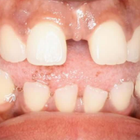

Front view
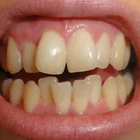
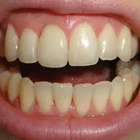
Front view
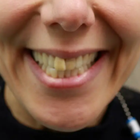

Front view
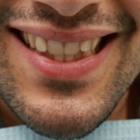
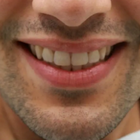
Front view
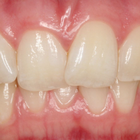

Front view
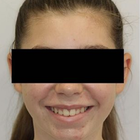
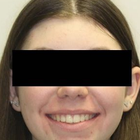
Front view
WHY US?
At Medijump, we're making medical easy. You can search, compare, discuss, and book your medical all in one place. We open the door to the best medical providers worldwide, saving you time and energy along the way, and it's all for FREE, no hidden fees, and no price markups guaranteed. So what are you waiting for?

Free

Best Price

Widest Selection

Risk-Free
What you need to know about Invisalign in Mexico

Also known as Clear-Aligner Treatment. Invisalign is the clear alternative to conventional dental braces used to adjust and straighten teeth, whilst simultaneously improving the patients smile. Through the use of virtually invisible and removable custom-made smooth plastic aligners, dentists are able to place the Invisalign over the teeth allowing for a gradual shift.
Invisalign manufacture the most well known of these clear aligners - the product comprises of a series of computer-generated aligners that are tailor-made to the patient’s teeth. By changing aligners every two to three weeks, the patient’s teeth will gradually move into the correct alignment. The aligners are easy to take off throughout the treatment, allowing the patient to brush and clean their teeth and eat as per normal. Compared to traditional braces, there are no metal brackets and they’re almost invisible to the eye.
This process can help to correct Spacing, Crossbite, Open Bite, Crowding, Excessive Overjet, and Deep Bite.
What is the cost of Invisalign in Mexico?
The pricing for Invisalign within Mexico hinges considerably on several aspects. These comprise the complexity of the patient's condition, the length of the treatment period, and the particular clinic offering the service. In general, the cumulative price remains in line with conventional brace treatment, thus positioning Invisalign as a financially feasible choice for many. Moreover, several dental insurance schemes offer coverage for Invisalign, mitigating the direct costs that the patient incurs.
Additionally, it should be noted that over time, Invisalign may prove to be a financially prudent choice. As it assists in rectifying improperly aligned teeth, it can deter future health complications associated with insufficient oral hygiene such as periodontal ailments or tooth decay, thereby saving you the expense of high-priced future dental treatments. Therefore, making an investment into Invisalign may play a part in promoting sustained dental wellness.
How Long Should I Stay in Mexico for a Invisalign Procedure?
Since this is a non-invasive procedure, you may return to your holiday immediately after you have received your first set of clear aligners. However, strict compliance with your scheduled appointments with your orthodontist is essential. You will be required to see the dentist a few times during your stay so you should be aiming to stay in Mexico for as long as possible, with 2 weeks being the absolute minimum. Subsequent appointments for check-ups and adjustments are typically scheduled every six weeks, but these are relatively quick visits.
What's the Recovery Time for Invisalign Procedures in Mexico?
One of the primary benefits of Invisalign compared to other orthodontic methods is the notably short healing time. Typically, patients go through minimal or no pain during the treatment period. There might be a slight discomfort or pressure sensation in the initial days following the introduction of a new aligner, which is an indication that the aligner is effectively shifting your teeth to their correct position. Such discomfort generally settles after a few days.
It's significant to note that maintaining excellent dental hygiene and following the instructions given by your medical professional can considerably influence the successful recuperation and ultimate outcome of your Invisalign. This might entail properly looking after your aligners and regular dental appointments to track your progress.
What sort of Aftercare is Required for Invisalign Procedures in Mexico?
Your treatment time will also be based on how much your teeth need to be properly aligned. Typically, patients are required to use Invisalign from ten to twenty-four months.
You should avoid hot drinks while wearing the Invisalign since it is made from clear plastic, it can be deformed by hot liquids, any flavored drink, any drink that contains sugar and/or acidic can form cavities and/or stain the Invisalign.
It’s best that you remove your aligners each time you eat, plaque and food particles can get trapped in your aligners. This will lead to the formation of cavities and bad breath, so it is very important that you brush your teeth after every meal.
What's the Success Rate of Invisalign Procedures in Mexico?
Globally, Invisalign demonstrates a substantial level of success, and similarly, in Mexico. Research indicates a large number of individuals experiencing significant enhancements in not only their smile but also their complete dental wellbeing post undergoing Invisalign. This procedure is additionally seen to positively influence self-worth and living standards. Nonetheless, the triumph of Invisalign is majorly dependent on the patient's dedication to adhering to the advised daily 20-22 hours of aligner use and consistently keeping up with scheduled dental visits. Since Invisalign can be removed anytime, your treatment’s success will rely heavily on how frequently you will use clear aligners
What Should You Expect Before and After the Procedure
Before your treatment, you will need to consult your orthodontist first. During your scheduled consultation, you will undergo a series of tests including x-rays, digital scans of your teeth or photographs to determine your diagnosis and plan your treatment procedure. The end-goal is for you to have a healthy bite, your top and bottom teeth must be proportioned properly.
Once all tests have been made, the specialized computer software will be used to design a plan on how your teeth will be moved from their current position to their best position possible. Invisalign is generated using a computer to make aligners especially designed for you and are clear colored. Your aligners will be changed every 2 to 3 weeks, which will allow your teeth to move into alignment. You will also be required to use it for twenty to twenty-two hours a day. Since Invisalign is non-surgical, anesthesia is not a requirement during the whole procedure.
Are there Alternatives to Invisalign Procedures in Mexico?
While Invisalign is a great alternative to straighten your teeth and to have that perfect smile you are aiming for, some people may not be able to afford the treatment. The good news is that there is an alternative to clear aligners, such as Clear Correct - this also makes use of clear plastic aligners to straighten your teeth. The total cost for this type of aligner is usually cheaper than Invisalign. However, Invisalign uses top-notch planning software to determine your treatment plan, making it much easier to attain a successful result.
What are the Potential Risks of Invisalign?
Although Invisalign is typically deemed safe, comparable with most medical procedures, it is not completely devoid of potential complications. Frequently reported challenges entail discomfort, pronounced when transitioning to fresh aligners, and it may transiently influence your verbal communication. Also, there is a susceptibility to dental caries and periodontal disease if appropriate oral care is neglected throughout the procedure. Although infrequent, the effectiveness of Invisalign might not match up to the conventional braces in extremely difficult cases.
Should you get Invisalign or Braces?
Invisalign has become a very popular alternative to metal brackets. Unlike metal braces that stay cemented onto your teeth for a long period of time. Invisalign is a series of detachable clear plastic aligners that guide your teeth into its proper position and alignment. Other advantages of the use of Invisalign are:
- Comfort - since it is made of thin and flexible plastic, it will not irritate the soft tissues in your mouth unlike metal braces and its metal wires.
- Better oral hygiene and Greater Dietary choices - At any stage of the treatment you can remove the aligners to allow yourself to eat and also to Brush your teeth at least twice daily.
- Discreet look - Invisalign is an invisible plastic material that will go unnoticed on your teeth once you use it.
- Teeth-Grinding Protection - it can also function as a nightguard that can protect your teeth from excessive grinding and clenching habits.
One important thing to know is that, although Invisalign is one alternative option to traditional braces, it is not for everyone. A clear aligner is usually used on patients who have moderately crowded teeth or have minor spacing issues on their teeth. Furthermore, because it is custom-built to be a tight fit, it is best used for adults or teens. Patients who have more serious spacing problems and crowded teeth, including patients who have severe overbites, under-bites or cross-bites will require a more intricate treatment.
Invisalign v's Conventional Braces
- Invisalign can be worn with more confidence due to the difficulty in seeing them.
- Invisalign feels more comfortable, with braces irritating and sometimes even chafing the inside of the mouth.
- Invisalign is perfect for athletes, who are able to remove them during sport.
- Braces are semi-permanent, whereas Invisalign can be removed at any time, so fewer trips to the dentist are required when compared to Invisalign.
- Braces are quicker to close gaps or straighten teeth.
- Braces can make some foods difficult to eat, whereas, with Invisalign, they can be removed whilst eating tricky meals.
Whilst the information presented here has been accurately sourced and verified by a medical professional for its accuracy, it is still advised to consult with your doctor before pursuing a medical treatment at one of the listed medical providers
No Time?
Tell us what you're looking for and we'll reachout to the top clinics all at once
Enquire Now

Popular Procedures in Mexico
Prices Start From $1

Prices Start From $1

Prices Start From $1

Prices Start From $48

Prices Start From $1

Prices Start From $1

Prices Start From $1

Prices Start From $11

Prices Start From $1

Recommended Medical Centers in Mexico for Invisalign

- Interpreter services
- Translation service
- Religious facilities
- Medical records transfer
- Medical travel insurance
- Health insurance coordination
- TV in the room
- Safe in the room
- Phone in the room
- Private rooms for patients available

- Interpreter services
- Translation service
- Religious facilities
- Medical records transfer
- Medical travel insurance
- Health insurance coordination
- TV in the room
- Safe in the room
- Phone in the room
- Private rooms for patients available

- Interpreter services
- Translation service
- Religious facilities
- Medical records transfer
- Medical travel insurance
- Health insurance coordination
- TV in the room
- Safe in the room
- Phone in the room
- Private rooms for patients available

- Interpreter services
- Translation service
- Religious facilities
- Medical records transfer
- Medical travel insurance
- Health insurance coordination
- TV in the room
- Safe in the room
- Phone in the room
- Private rooms for patients available

- Interpreter services
- Translation service
- Religious facilities
- Medical records transfer
- Medical travel insurance
- Health insurance coordination
- TV in the room
- Safe in the room
- Phone in the room
- Private rooms for patients available

- Interpreter services
- Translation service
- Religious facilities
- Medical records transfer
- Medical travel insurance
- Health insurance coordination
- TV in the room
- Safe in the room
- Phone in the room
- Private rooms for patients available

- Interpreter services
- Translation service
- Religious facilities
- Medical records transfer
- Medical travel insurance
- Health insurance coordination
- TV in the room
- Safe in the room
- Phone in the room
- Private rooms for patients available

- Interpreter services
- Translation service
- Religious facilities
- Medical records transfer
- Medical travel insurance
- Health insurance coordination
- TV in the room
- Safe in the room
- Phone in the room
- Private rooms for patients available

- Interpreter services
- Translation service
- Religious facilities
- Medical records transfer
- Medical travel insurance
- Health insurance coordination
- TV in the room
- Safe in the room
- Phone in the room
- Private rooms for patients available

- Interpreter services
- Translation service
- Religious facilities
- Medical records transfer
- Medical travel insurance
- Health insurance coordination
- TV in the room
- Safe in the room
- Phone in the room
- Private rooms for patients available





